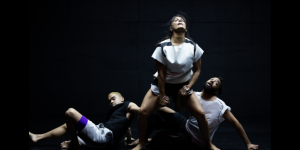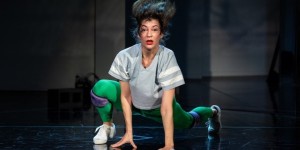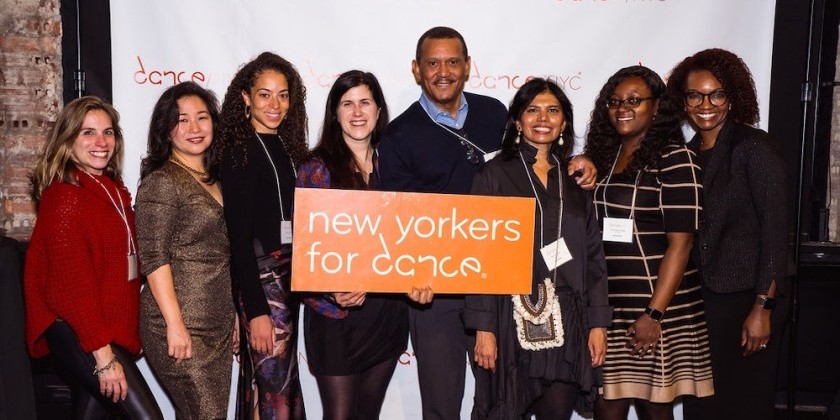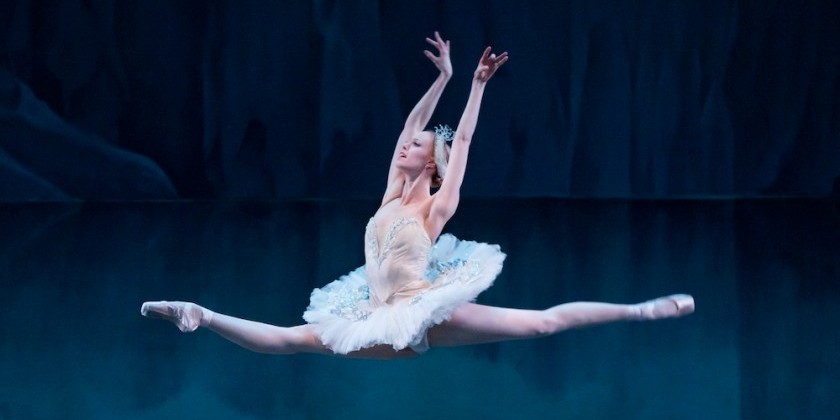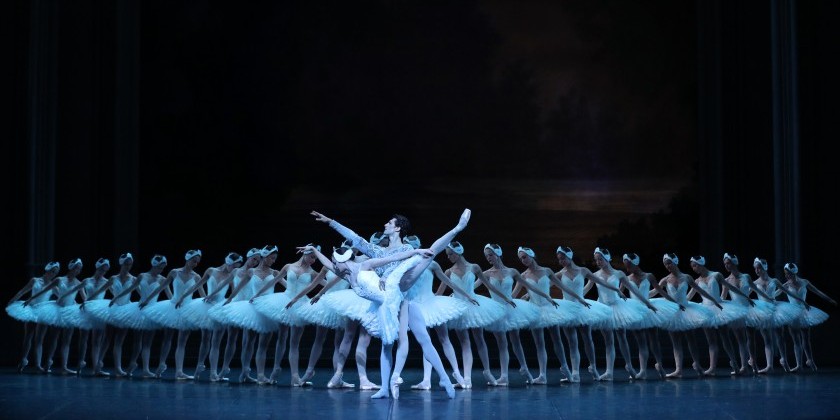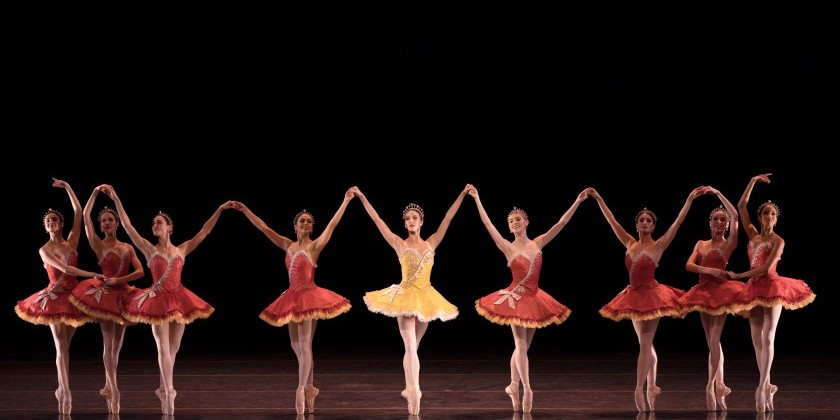The Dance Enthusiast Asks: American Ballet Theatre Principal, Marcelo Gomes, About "AfterEffect"

American Ballet Theatre principal dancer Marcelo Gomes began studying dance in his native Brazil before leaving his family at age thirteen to attend the Harid Conservatory in Boca Raton, Florida. He also spent one year of high school at the Paris Opera Ballet School.
Now 36, Gomes displays immense pride in, and affection for, the company he has called home for half his life. He began as a corps member 18 years ago, quickly rising to soloist rank and then, in 2002, to principal. The list of ballets on his ABT résumé spans nearly every letter of the alphabet, and they include parts made especially for him. A favorite of ABT artist in residence Alexei Ratmansky, Gomes has created leading roles in five of his works. Gomes’s skills as a partner are nearly as lauded as his dancing and acting. “Everybody wants to partner with Marcelo. We have to fight over him,” fellow principal Gillian Murphy said in a recent documentary on ABT by Ric Burns.
Always seeking to expand his artistic horizons, Gomes began choreographing short works for ABT galas in 2012. ABT’s fall New York season, running from October 21 to November 1, features the premiere of his first full commission from the company, a four-movement ballet called AfterEffect. He has set the new work to Tchaikovsky’s lush string sextet Souvenir de Florence. The Dance Enthusiast recently spoke to Gomes about AfterEffect.
Nicole Dekle Collins for The Dance Enthusiast: In your 18 years at ABT, you’ve had the kind of career most dancers can only dream of. What lies behind your desire to choreograph as well?
Marcelo Gomes: I think it’s the desire of working with dancers. I’m really inspired by the artists at ABT. When I first started choreographing [about five years ago], I would improvise and try things out with Misty Copeland in the studio when we had some free time, just by ourselves.
TDE: You’ve made three small-scale works for ABT galas, but AfterEffect is your first full commission from the company. It’s also your most ambitious undertaking, with four movements and a large cast. What kinds of new opportunities does this large-scale format give you and what are the challenges of working on such a big canvas?
MG: Because of the size of Tchaikovsky’s music, I feel like it needed the weight of a larger cast. I don’t think the ballet would have worked with a smaller-scale cast. [AfterEffect fields 23 dancers.] One advantage of a larger cast, as opposed to, say, three people or a pas de deux, is you’re able to explore not only formations, but how you are going to move people about the stage a lot more. You’re also able to create images that you would not be able to with a smaller-scale cast. I would say that one of the challenges is how to make sure that everyone is breathing together so that they are moving at the same time and listening to the music at the same time.
Unlike many other companies, ABT is rehearsing six or seven other ballets at the same time, including two world premieres. So it’s a lot for the dancers to take in. It’s a lot to ask for their concentration and attention. I think my job is to keep them inspired to keep going.
TDE: Watching your rehearsal of the second movement, I noticed that it has a classical base but the movements also break out of the academic frame and go in unexpected directions. Some choreographers have a strong feeling that ballet needs to be made new. What are you seeking to do regarding classical and contemporary elements?
MG: I don’t think about what I’m trying to do per se. I think it’s a funny thing when choreographers say they’re trying to reinvent something. The steps are all there. An arabesque is an arabesque. It’s the feeling that you put into that arabesque that’s going to make it different from the arabesque that you do in other pieces. What is it going to say? Does it have a celebratory feel? Does it have emotion? I guess I’m trying to make the steps that we all know have a little bit more freedom. As a dancer, my body is really versatile in being able to do something really classical and at the same time put in a twist that’s contemporary and then go back to something that’s really classical, so maybe I’m drawing on my own experience [in putting that in my work]. It’s a definite challenge to tell a dancer to do a really placed pirouette while looking up or with a different kind of arm.
TDE: Putting a certain emotion into an arabesque: That’s something I strongly associate with your dancing. You have a gift for putting emotion into the steps that goes beyond anything I’ve seen anyone else do. Your Theme and Variations and your Oberon in The Dream, for example, are amazing to me.
MG: Thank you. I really enjoy that. I think that as a dancer you have to be a chameleon. You have to adapt to whatever you’re trying to say, and the story, and the costume you’re wearing—you have to own it. I would perform an arabesque in Theme differently from an arabesque as Oberon in The Dream. I think the same thing applies when you’re choreographing. It’s not just putting steps together but also talking to the dancers about what kind of meaning it has behind it so that in everything they do there’s a purpose. And then it’s up to them. Then it’s theirs. There’s definitely a different level of control there because you can speak all you want, but then it’s up to the dancer to interpret what I’m saying, to take it to another level. It’s a very interesting thing to witness.

TDE: So, in choosing Misty Copeland and James Whiteside to lead the first cast and Cassandra Trenary and Cory Stearns to lead the second cast, is it their ability to absorb things in that way and put purpose into their dancing that’s one of the reasons you selected them?
MG: Absolutely. These are dancers who have really open minds, and I could see when I was telling them what was happening that they understood it. And I can see that they are trying to reach for a certain kind of emotion—AfterEffect has an underlying feeling but it doesn’t tell a story for you. It has to be inside of them to be able to say what they’re feeling.
TDE: When I saw the principal man’s solo in the second movement, I thought, “I’d love to see Marcelo dance this role himself.” I could so easily see you doing it. I wondered if, when you created the role, you made a dance that you would have loved a choreographer to make for you.
MG: (Laughing) It’s so funny because I get that so much from everyone. All my dancers say that. Even the little solo I recently choreographed for Misty for "The Late Show with Stephen Colbert." I had friends from high school [the Harid Conservatory] writing me on Facebook, saying, “I see you all over the solo. I can’t believe it. You’re still the same guy.” Yes, I do try to make movements that I would enjoy. I know of course that I can’t rely on everything I can do because you have to work with the dancers who are in front of you. But at the same time, you have to challenge them, so they can reach for new heights. Or reach for something that they haven’t really figured out how to do with their bodies yet. And some of that “slow movement into fast movement into slow again into really feeling something from deep inside” is a thing that I take very much pride in when I step onstage. And it’s something that I’d like to pass on. Maybe that’s why it starts looking like something I would do.
TDE: What aspects of Tchaikovsky’s Souvenir de Florence music made you want to make a dance to it?
MG: It’s a score I’ve wanted to do something to for a long time. I know that many other choreographers have used it and they’ve done other things to it, but I thought this piece of music could be great for a big cast and for American Ballet Theatre. I try to think about who I’m choreographing for and what the piece of music tells me it needs. I think perhaps if I’d been using a different piece of music, perhaps I wouldn’t have needed such a large cast. But this Tchaikovsky score is so luscious and so full of depth and so sensitive and has so many different kinds of emotions to it that I felt like I needed this weight. Music definitely comes first for me. It’s very rare that I say, “Oh, I want to make a piece for Misty and James and what music will I use?” It’s the other way around for me.

TDE: You choreographed a dance to the first movement of Souvenir de Florence for an ABT gala in 2013 using a cast of eight men.
MG: Yes, but I’ve completely redone that movement. I saved a lot out from that section, but I’ve reworked it and I’ve put four other men in it and a principal man. Also, the costumes are different, and I use a different concept. So for me it’s a new movement inspired by what I did before.
TDE: Why did you name the piece AfterEffect?
MG: I’m interested in the aftereffect, or the aftermath, that takes place after somebody has suffered a tragedy. I guess interested is not the right word. I am in awe of how people carry on with their lives after such a big impact on them or their families. It could be a personal tragedy or something that happens to hundreds of people—a tsunami or 9/11 or an earthquake. I’m amazed that they can carry on year after year. For some people it becomes harder to keep going, and for others it becomes easier. I have lots of questions and answers about the people who carry on, and whether they’ve had a positive aftereffect or a negative aftereffect. So I decided to make a piece about that. [Editor’s note: Intimations of loss and of imminent loss permeate the second movement, and, in a recurring motif, the dancers cover their eyes, as though to avoid looking at something in their memory that’s too terrible to see.]
TDE: Beyond your premiere of AfterEffect, I know you’re making your debut this season in the role of Death in The Green Table. Do you have anything you want to say about The Green Table or this role and how you’re approaching it?
MG: The Green Table was choreographed by Kurt Jooss [in 1932]. He choreographed Death on himself, which is kind of hard to believe because it’s so difficult. It’s very hard coordination-wise and stamina-wise. The piece is about war, how it keeps reoccurring in one format or another. And how Death follows war, and how Death takes people’s lives in different ways. Sometimes he’s very certain he is going to take their lives, sometimes he is compassionate, sometimes he has an authority, sometimes he is a bit softer and gentler.

TDE: You’ve said that you want to keep expanding your experiences, push limits, and go in different directions. Do you have more choreographic commissions lined up or music that you already know you want to use?
MG: Absolutely. I’m listening to music all the time. I’d love to choreograph on other companies as well. This is my first full commission for ABT and I hope that it will open doors for me to choreograph on other companies.
I’ve also started a wonderful relationship with Matthew Bourne. I did his Swan Lake and, this summer, The Car Man [in London]. I am excited to see what will happen in the future as our relationship grows. It’s been a wonderful challenge for me to be in a room learning from literally everyone. I was the odd man out. That was very scary. I had to learn a different way of working, a different way of dancing, a different way of performing, of carrying myself onstage. A much more natural way. But that has helped my acting also for many things in the classical ballet repertoire. So I’m excited to continue working with him and see what the future holds for that. [The Car Man is Bourne’s film-noirish retelling of Carmen set in 1960s America; the work calls for naturalistic acting and a movement style that’s more grounded than traditional ballet.]
TDE: Any great dancer in a major company becomes a role model for the members of the corps de ballet. And with YouTube, you in a sense become a role model for ballet students all over the world. What aspect of your dancing do you hope resonates most with aspiring dancers who watch you?
MG: There are a few things that I attach a lot of importance to in my dancing, like musicality or how to partner a ballerina. How to carry yourself onstage, how to act, how to walk, how to run. I feel like those are very simple, but they are very hard things for people to learn. At the same time, I think that the ability to stay humble in order to keep growing is something that I take very seriously and I think that people could use maybe a little bit more of it. To say that you’ve done a ballet, that you’ve learned everything, and wash your hands of it … I don’t think it works that way. I think you can keep pushing yourself, keep pushing the limits, and keep learning even at my age of 36. It has worked for me, and I’m going to continue learning. I think that never stops.




